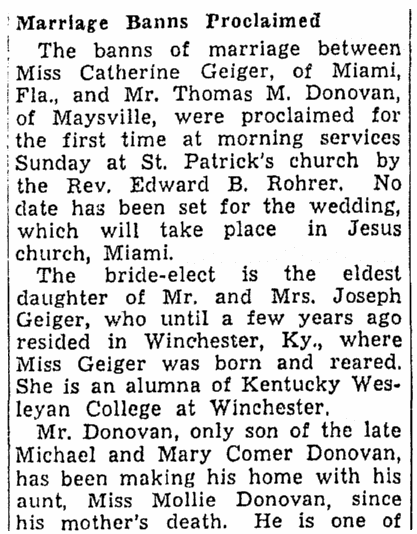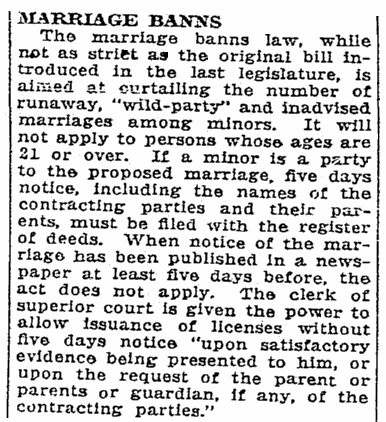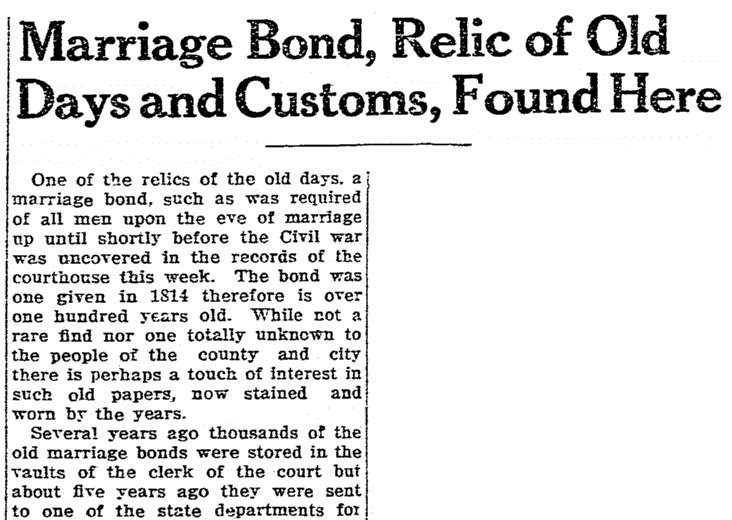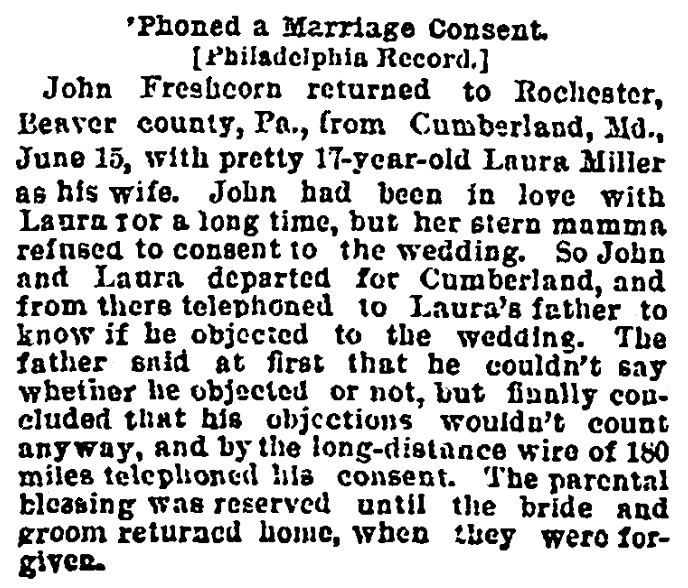Introduction: In this article – part of an ongoing “Introduction to Genealogy” series – Gena Philibert-Ortega continues her discussion of alternative marriage records for when you can’t find your ancestor’s marriage license. Gena is a genealogist and author of the book “From the Family Kitchen.”
In our previous Genealogy 101 articles we discussed marriage licenses and marriage record alternatives (see Genealogy 101: #14 Marriage Licenses and Genealogy 101: #15 Marriage Record Alternatives). There is more to marriage records than a license or a certificate; let’s talk about some other types of marriage records you may come across as you research your family tree. It’s important to keep in mind that the type of record available may be dependent on the time period and place you are researching.
One commonality found in the records discussed below is that they all in some way deal with the question of whether the engaged couple can be lawfully wed.
Marriage Banns (Also Referred to as Bans)
Marriage banns were simply the reading in church of an announcement that two people were going to be wed. These banns were read in a Christian church on three consecutive Sundays prior to the wedding. By announcing the couple’s intention to marry to the congregation, those in attendance could raise an objection – such as if they knew the bride or the groom was currently married, or if they were underage.
While the priest read the banns to his congregation, banns could also have been posted at the church or even in the newspaper.

While we may think marriage banns only happened in the 19th century or earlier, 20th century reformers thought that marriage banns should be required to stop underage marriages or to prevent divorces. A 1929 North Carolina law made it mandatory for those under 21 years of age to announce their intentions via a marriage bann.
This newspaper article makes it clear that those underage marriages were seen as frivolous and not well thought out. The newspaper reports that the law:
…is aimed at curtailing the number of runaway, “wild-party” and inadvised [sic] marriages among minors… If a minor is a party to the proposed marriage, five days notice, including the names of the contracting parties and their parents, must be filed with the register of deeds. When notice of the marriage has been published in a newspaper at least five days before, the act does not apply. The clerk of superior court is given the power to allow issuance of licenses without five days notice “upon satisfactory evidence being presented to him, or upon the request of the parent or parents or guardian, if any, of the contracting parties.”

Marriage Bonds
According to Judy Russell, the Legal Genealogist, a marriage bond was commonly used into the 19th century in the Southern and Mid-Atlantic states. These bonds were a guarantee by the groom and a bondman (most likely a relative) that there was no legal reason a couple shouldn’t marry. The guarantee that everything was legal was made by promising to pay a fine if proven otherwise.*

Marriage Consent
The age at which people could consent to their own marriage differed across the United States. In cases where someone underage wanted to marry, they needed a consent form signed by a parent or guardian. The helpful genealogy book The Source: A Guidebook to American Genealogy (available online) says that typically, consent was provided by fathers. Cases in which a mother consented might indicate that the father was deceased.**

Matrimonial Investigation Records
Depending on the time, location, and religion of your ancestor, you may find additional types of marriage records. A case in point is Matrimonial Investigation Records that can be found in Catholic records. These records document whether the couple was free to marry, and asked questions about age, possible shared familial relationship, and current/previous marriage. One example of a mission-era California collection of these records can be found on the Claremont College Digital Library. This collection spans the 18th and 19th centuries. You can also find some of these records by doing a FamilySearch catalog search for “diligencias matrimoniales” (though mostly for other countries), and by checking with Catholic archives.
Keep Searching!
Make sure you do a search of FamilySearch, city/state government entities, and archives to understand what marriage records exist for the time period and place you are researching. In some cases, you might be able to find a book, webinar, or other tool to better understand marriage records for your ancestor’s home state and time period. And if there are simply no records that exist, don’t forget to search for marriage record alternatives!
Related Articles:
————————-
* “The ties that bond,” The Legal Genealogist (https://www.legalgenealogist.com/2012/01/25/the-ties-that-bond/: accessed 10 March 2017).
** “Marriage Records, “ Ancestry Wiki (https://www.ancestry.com/wiki/index.php?title=Marriage_Records: accessed 10 March 2017).
